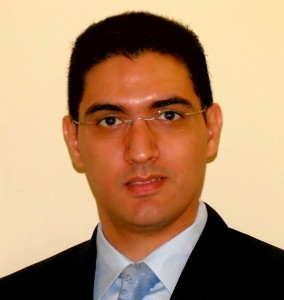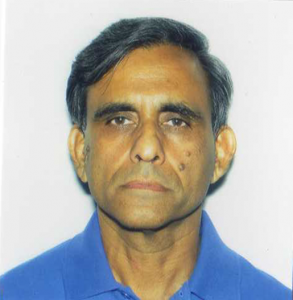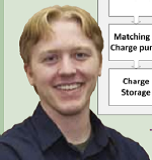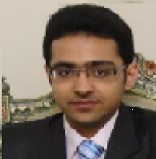Tuesday, April 8 features optional bonus tutorial sessions from RFID experts. Each tutorial gives you 3 IEEE Professional Development Hours (PDHs). Lunch and coffee breaks will be provided. Conference attendees have two options for attending:
- One session; Choose any single session in the morning or afternoon ($100)
- Two sessions; Choose one morning session and one afternoon session ($150)
Simply indicate how many tutorials you want while registering. Register Now.
Tutorials
Morning:
 1. How the Future Looks for UHF RFID! Given by Khaled ElMahgoub (Trimble Navigation, MIT Auto-ID Labs, Senior Member IEEE). In this presentation a description of different RFID technologies in today’s market will be provided. In addition, the presentation will provide a detailed description of the current ultra high frequency (UHF) RFID technology, and explore the future approaches for possible usage of UHF RFID systems. Moreover, a brief description about different technologies that could be used as an identification tool will be provided. Radio Frequency Identification (RFID) is a technology which uses RF signals for automatic identification of objects. RFID is used for many applications in various areas such as electronic toll collection, asset identification, retail item management and many others. RFID enabled organizations can achieve numerous strategic and economic benefits such as: collecting accurate information about anything efficiently, automating common business processes, reducing inventory loss, improving productivity, as well as increasing data security and integrity.
1. How the Future Looks for UHF RFID! Given by Khaled ElMahgoub (Trimble Navigation, MIT Auto-ID Labs, Senior Member IEEE). In this presentation a description of different RFID technologies in today’s market will be provided. In addition, the presentation will provide a detailed description of the current ultra high frequency (UHF) RFID technology, and explore the future approaches for possible usage of UHF RFID systems. Moreover, a brief description about different technologies that could be used as an identification tool will be provided. Radio Frequency Identification (RFID) is a technology which uses RF signals for automatic identification of objects. RFID is used for many applications in various areas such as electronic toll collection, asset identification, retail item management and many others. RFID enabled organizations can achieve numerous strategic and economic benefits such as: collecting accurate information about anything efficiently, automating common business processes, reducing inventory loss, improving productivity, as well as increasing data security and integrity.
 2. RF Basics of Near-Field Communications (NFC). Given by Somnath Mukherjee (Thin Film ASA, Senior Member IEEE). The tutorial will cover in depth the RF aspects of Near Field Communication with discussions on topics like power transfer to Tag chip and Load Modulation. Antenna design, with considerations on practical problems like mitigation of blind spots, effect of metal etc., will be discussed. Measurement of various parameters for understanding the inherent mechanisms as well as NFC Forum standard tests will be covered. Real life examples from industry will be used throughout to illustrate the underlying concepts.
2. RF Basics of Near-Field Communications (NFC). Given by Somnath Mukherjee (Thin Film ASA, Senior Member IEEE). The tutorial will cover in depth the RF aspects of Near Field Communication with discussions on topics like power transfer to Tag chip and Load Modulation. Antenna design, with considerations on practical problems like mitigation of blind spots, effect of metal etc., will be discussed. Measurement of various parameters for understanding the inherent mechanisms as well as NFC Forum standard tests will be covered. Real life examples from industry will be used throughout to illustrate the underlying concepts.
Afternoon:
 3. Near-Field Wireless Technology. Given by Hans Schantz (CTO, Q-Track Corporation, Senior Member IEEE). This workshop will discuss the origins of near-field wireless, survey applications, present near-field links laws, and discuss the properties and performance of electrically- small antennas. Near-field wireless technology is an emerging area of great importance in RFID. Specific applications including low frequency (LF) and high frequency (HF) RFID, Near-Field Communications (NFC), RuBee (IEEE 1902.1), and Near-Field Electromagnetic Ranging (NFER).
3. Near-Field Wireless Technology. Given by Hans Schantz (CTO, Q-Track Corporation, Senior Member IEEE). This workshop will discuss the origins of near-field wireless, survey applications, present near-field links laws, and discuss the properties and performance of electrically- small antennas. Near-field wireless technology is an emerging area of great importance in RFID. Specific applications including low frequency (LF) and high frequency (HF) RFID, Near-Field Communications (NFC), RuBee (IEEE 1902.1), and Near-Field Electromagnetic Ranging (NFER).

 4. Advanced RFID Prototyping with the WISP 5.0. Given by Aaron Parks and Saman Naderiparizi (University of Washington, Members IEEE). In this tutorial session, we will go through the hardware and firmware structure of the new WISP in detail, and will kick-start attendees’ WISP prototyping efforts with a demonstration of application prototyping and free hardware. The Wireless Identification Sensing Platform (WISP) is a programmable passive tag that both communicates with and harvests energy from off-the-shelf UHF RFID readers. The WISP is an open source, widely used platform for rapid prototyping of computational RFID and RFID sensing applications. This year, we present the WISP 5.0, the latest revision of the WISP platform with many improvements including longer operating range, increased throughput, and onboard ultra low- power non-volatile FeRAM memory.
4. Advanced RFID Prototyping with the WISP 5.0. Given by Aaron Parks and Saman Naderiparizi (University of Washington, Members IEEE). In this tutorial session, we will go through the hardware and firmware structure of the new WISP in detail, and will kick-start attendees’ WISP prototyping efforts with a demonstration of application prototyping and free hardware. The Wireless Identification Sensing Platform (WISP) is a programmable passive tag that both communicates with and harvests energy from off-the-shelf UHF RFID readers. The WISP is an open source, widely used platform for rapid prototyping of computational RFID and RFID sensing applications. This year, we present the WISP 5.0, the latest revision of the WISP platform with many improvements including longer operating range, increased throughput, and onboard ultra low- power non-volatile FeRAM memory.
Questions/comments? Send an email to the tutorial chair.

